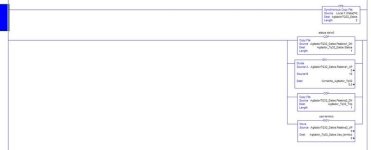ammarmansoor
Member
Local:1:0.Data[0] is 32 bits long and has output for my 4 DeviceNet Devices (8 bit each). My question is how do i separate them and put each device (8 bits) under one 8 bit array ? I tried doing alias for each bit but then RSlogix doesn't allow me to put it under an 8 bit array ? Any help would be appreciated.






